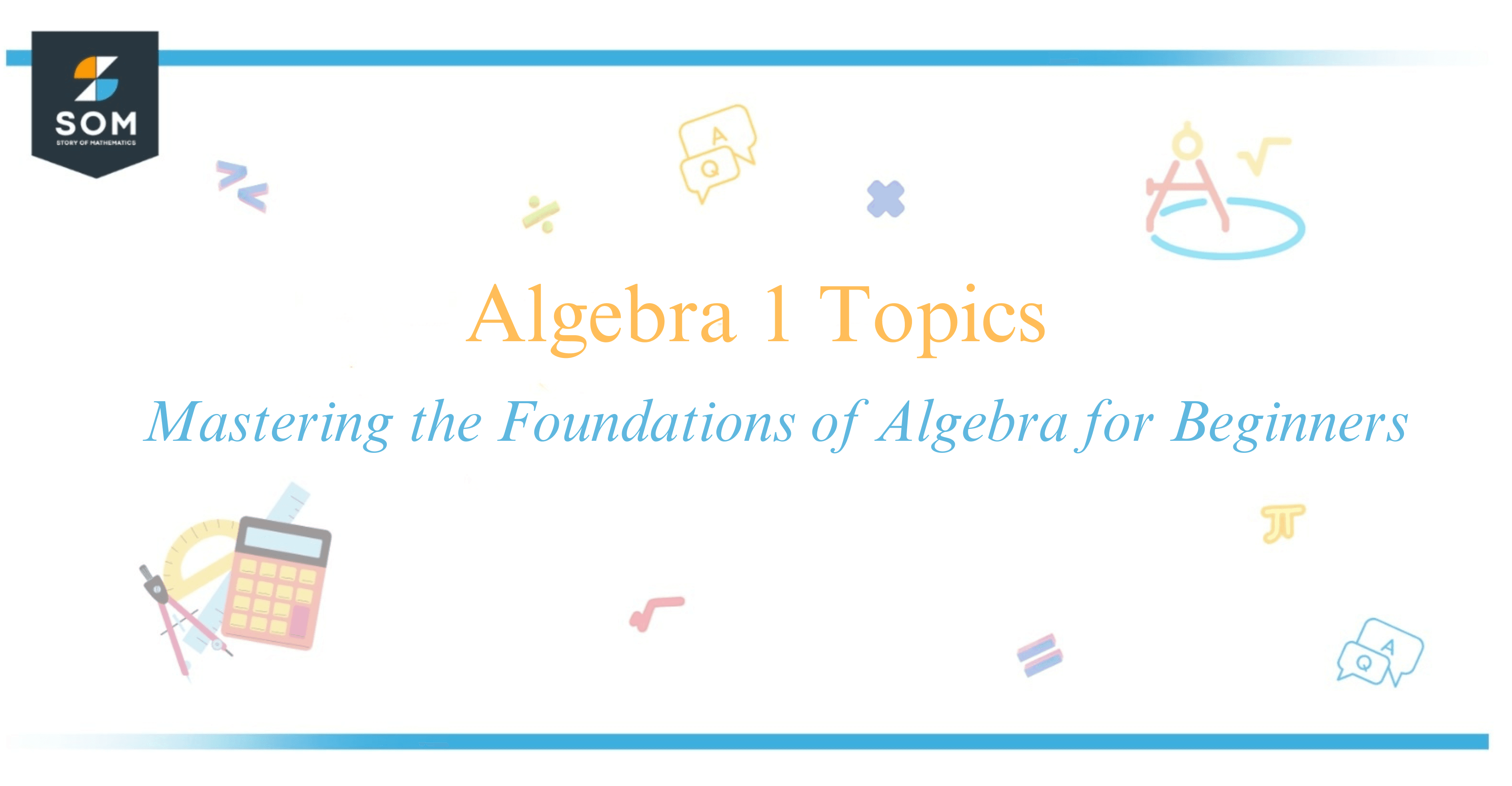
The Algebra 1 is a critical stage in our educational journey, especially during middle school and high school, where we lay down the groundwork for advanced mathematics.
This branch of math introduces us to the concept of using letters and symbols to represent numbers in equations and formulas—a fundamental skill that carries through other levels of math and into real-world applications. It’s not just about solving for x; it’s about understanding the how and why behind the equations we encounter.
In our exploration of Algebra 1, we’ll encounter core topics like the properties of real numbers, which underpin the entire structure of algebraic reasoning. We’ll get comfortable with variables, the algebraic expressions, and the art of simplifying them. Through these expressions, we grasp the process of evaluating and solving different types of equations and inequalities.
And of course, let’s not forget the applications—translating real-life situations into mathematical problems is part of what makes algebra so incredibly useful. Engaging with the foundations of algebra also means grappling with functions—the backbone of understanding how variables interact and depend on one another.
It’s a fascinating transition from concrete arithmetic to the abstraction that characterizes higher levels of mathematics. Stick with us, and we’ll discover that Algebra 1 is not just about learning math—it’s about acquiring a language that will unlock countless doors in the world of science, technology, engineering, and beyond. Let’s embark on this adventure together, shall we?
Topics Included in Algebra 1
In Algebra 1, we embark on a journey through various mathematical landscapes, beginning with the Foundations of Algebra. Here’s an overview of the exciting topics we cover:
Variables and Operations: These are the building blocks of algebra. We learn how to use variables like
xandyto represent numbers and apply mathematical operations—addition (+), subtraction (-), multiplication (×), and division (÷)—to manipulate them.Algebraic Expressions: We craft expressions using variables and numbers, harnessing operations and understanding how to evaluate them.
Equations and Inequalities: A core part of our journey, this involves solving linear equations and inequalities, which leads us to the concept of functions, portraying relationships between variables.
Linear Equations: We explore the many aspects of linear equations, including their various forms, and learn about the slope, essential for graphing these lines.
Quadratic Functions: In this landscape, we encounter forms of quadratics and delve into the world of factoring and solving quadratic equations.
Graphs: We visualize functions and their behaviors on graphs, a powerful tool for understanding and predicting patterns.
| Key Concepts | Description |
|---|---|
| Ratios / Fractions | Understand proportionality and division within expressions. |
| Factorization | Break down expressions into simpler, multiplicative components. |
| Exponents | Convey repeated multiplication with these powerful notations. |
| Inverse Operations | The path to solving equations by reversing operations. |
By the end of Algebra 1, we gain a comprehensive toolkit to approach a variety of problems with confidence. Each topic builds upon the last, creating a strong foundation for further mathematical exploration.
Exploring Complex Algebraic Concepts
In our quest to understand Algebra 1 fully, we often reach the point where we tackle complex algebraic concepts. The Quadratic equations represent a significant leap in this journey. While quadratic equations, which are often in the form of ( a$x^2$ + bx + c = 0 ), may initially seem daunting, mastering them opens up a world of possibilities in both mathematics and real-world applications.

Graphing is an essential skill as it helps us visualize functions and their domains. We often graph parabolas to represent quadratic functions, identifying the roots or x-intercepts, and the vertex, which is the highest or lowest point on the graph. Understanding these elements is crucial in fields like physics, where parabolic motions are abundant in projectile motion.
Geometry interlaces with algebra when we explore areas within the coordinate system, sometimes involving polynomials. When we encounter systems of equations, we’re dealing with multiple linear or nonlinear functions that intersect at a common point. Solving these can be challenging, but it equips us with problem-solving tools applicable in various STEM fields.
Here’s a brief look at some of these concepts:
| Concept | Description |
|---|---|
| Complex Numbers | Numbers that include the imaginary unit i, such as ( a + bi ). |
| Functions | Expressions that describe a relationship between sets of numbers. |
| Systems of Equations | Sets of equations with multiple variables that we solve together. |
We also delve into the realm of radicals and rational expressions, which involve square roots and expressions set over one another, much like fractions. Rational exponents introduce us to expressions like ( $x^{1/n}$ ), extending our understanding beyond real numbers.
As we advance, concepts naturally become more layered and interconnected. By mastering these, we lay a strong foundation for topics in Algebra 2 and even Calculus. Whether it be solving inequalities or simplifying radical expressions, the key is consistent practice and application, which some online resources facilitate by providing practice questions and explanations without the hinderance of web filters blocking educational content.
Conclusion
As we explore the landscape of Algebra 1, we recognize the significance of laying a solid foundation. This journey through mathematical concepts is not just about numbers and operations; it’s about developing critical thinking and problem-solving skills that are applicable beyond the classroom.
We’ve seen how variables, expressions, and equations form the core of Algebra 1, and how they are instrumental in abstracting real-world problems into mathematical models.
In our examination, we have learned the importance of mastering these fundamentals, as they serve as the building blocks for more advanced topics in mathematics. By gaining procedural fluency, we equip ourselves with the tools to tackle Geometry, Calculus, and other higher-level subjects with confidence.
Each concept, from evaluating expressions to solving linear equations, is a step on the path to mathematical proficiency.
Remember, the concepts covered in Algebra 1 are not isolated; they interconnect and weave into a broader mathematical tapestry. As we journey through these topics, we build a versatile skill set that serves us well in academic pursuits and real-world applications alike.
Let’s continue to embrace the challenges of Algebra 1 with enthusiasm, knowing that our efforts will pave the way for future successes in the realm of mathematics.
